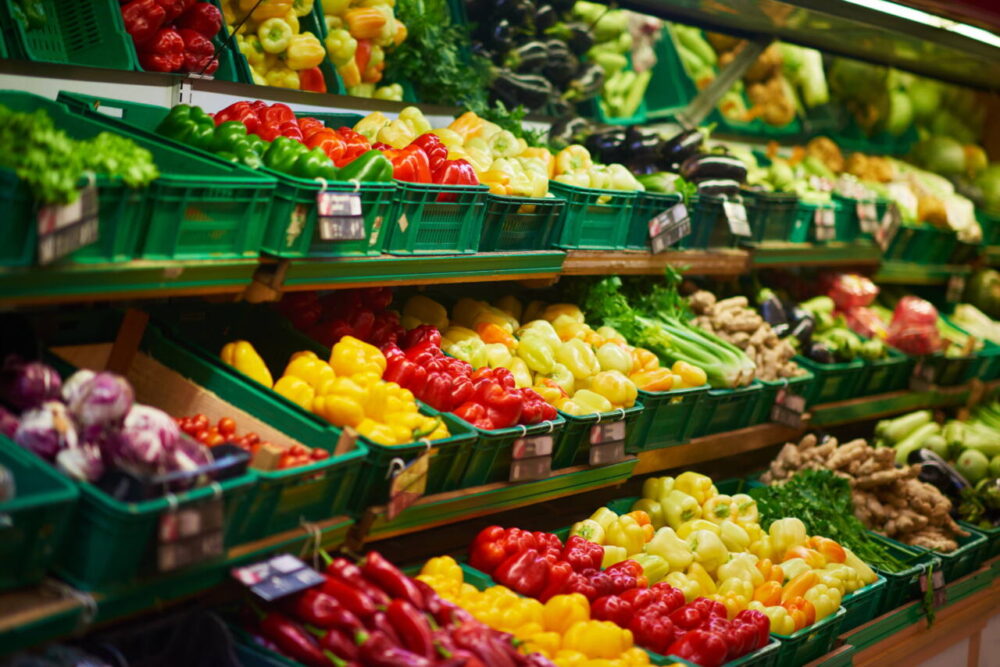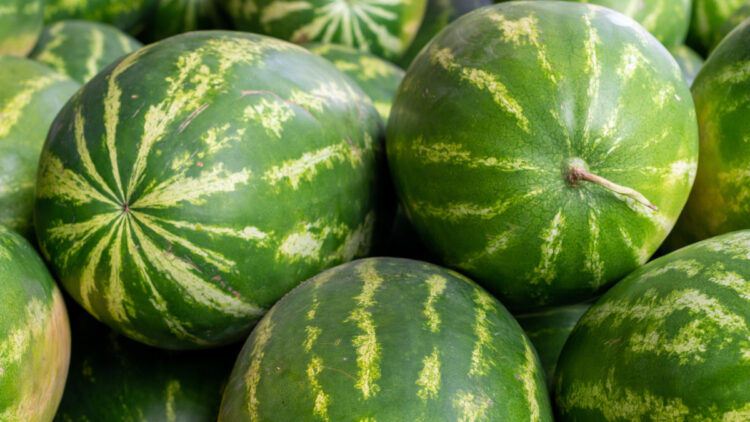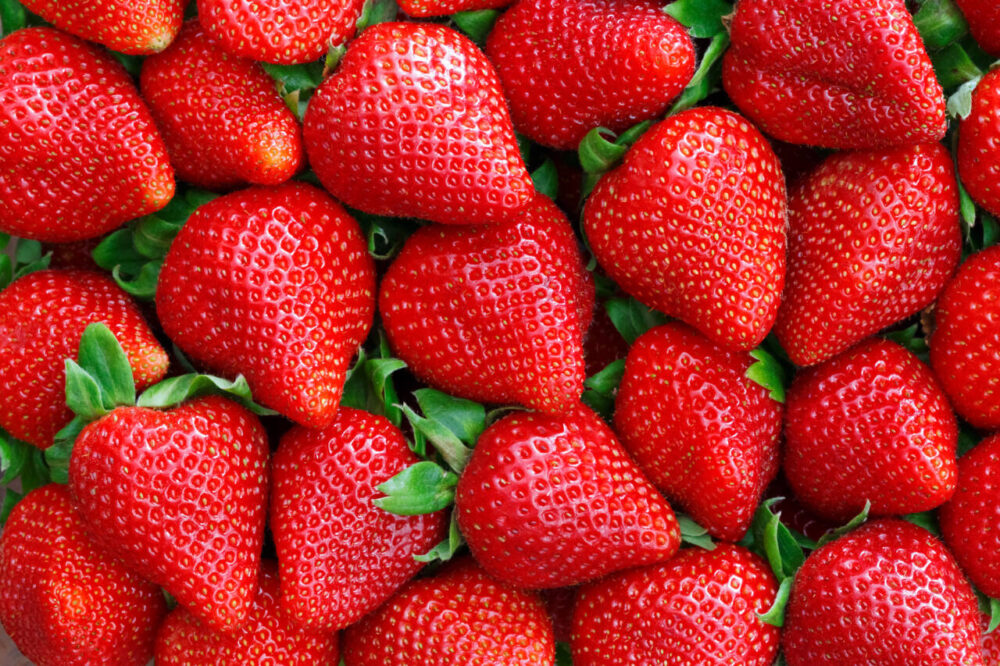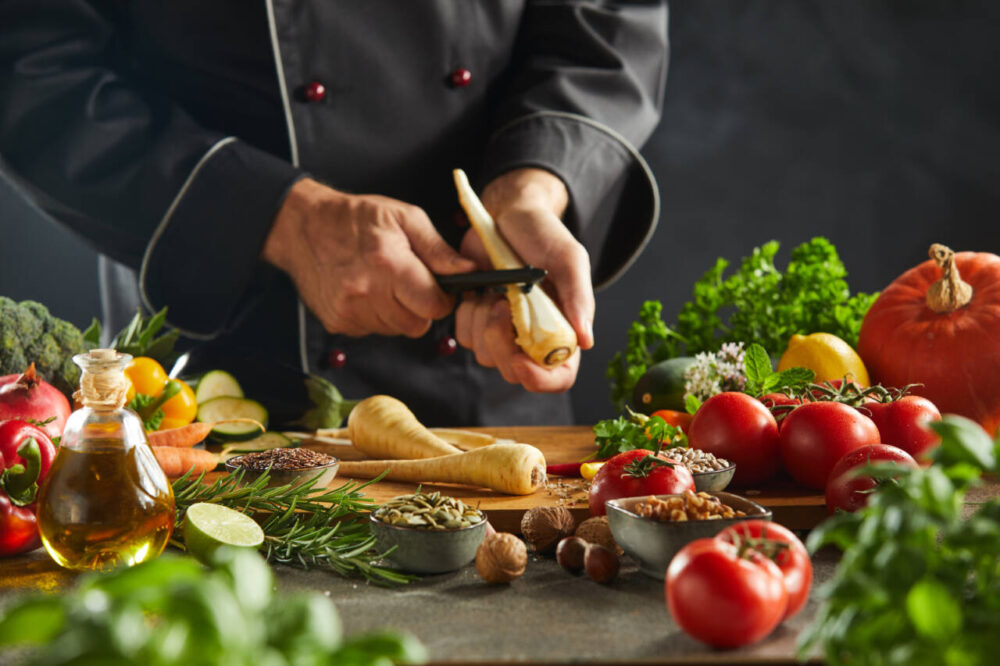The annual Shopper’s Guide to Pesticides in Produce is out, and once again, strawberries and spinach topped the guide’s 2024 “Dirty Dozen” list of produce with the most pesticides.
Each year, the Environmental Working Group (EWG), an environmental and health advocacy organization, releases a new Shoppers Guide to Pesticides in Produce to help educate shoppers about choosing fruits and vegetables. The highlight of this guide is the annual “Dirty Dozen” list, which highlights the 12 fruits and vegetables designated as the “most contaminated with pesticides,” based on the EWG’s study of data from the U.S. Department of Agriculture and Food and Drug Administration. The group’s annual report also includes a a “Clean Fifteen” list of produce with low amounts or no traces of pesticides.
EWG’s press release announcing the findings notes that “four of the five most frequently detected chemicals are fungicides: fludioxonil, pyraclostrobin, boscalid and pyrimethanil.” Fungicides are often applied to produce after it’s harvested to keep it free from mold on the way to the grocery store.
“Everyone – adults and kids – should eat more fruits and vegetables, whether organic or not,” EWG Senior Scientist Alexa Friedman, Ph.D., says in the press release. “But consumers concerned about pesticide exposure can use the suite of materials in EWG’s Shopper’s Guide to Pesticides in Produce to make the best choices for them and their families.”
Fruits and vegetables are the cornerstone of healthy eating. The Centers for Disease Control and Prevention recommends adults eat 1.5 to 2 cups of fruit and 2 to 3 cups of vegetables daily. However, the use of chemicals in traditional crop production raises concerns for some consumers, due to pesticide use being linked to multiple health issues in studies.

Why Some Farmers Take Issue With The Dirty Dozen List
Agricultural experts don’t disagree with the EWG findings about the presence of pesticides in nonorganic produce. However, scientists and farmers say it’s important to understand that the presence of pesticides isn’t dangerous on its own. Rather, it’s how much is present that should concern consumers.
“The dose makes make poison, not its presence or absence, and that does determines the potential for harm,” said Carl Winter, University of California, Davis emeritus professor of cooperative extension, told CNN. “In many cases you’d have to be exposed to a million times more than what we’re exposed to before you’d even see any effects.”
The Alliance for Food and Farming issued a statement against the Dirty Dozen list, citing research in the Journal of Toxicology which shows the EWG’s recommendation “to substitute organic forms of produce for conventional does not result in any decrease in risk to consumers because residues on conventionally grown are so low, if present at all.”
All of the samples tested for EWG’s 2024 report did fall within legal levels determined by the Department of Agriculture and the FDA. Also, in the report, the list authors also state in the report methodology that they look at pesticides equally and and “do not factor in the pesticide levels deem acceptable by the Environmental Protection Agency.”

What Foods Are on the ‘Dirty Dozen’ List?
EWG analyzed 47,510 samples of 46 fruits and vegetables to determine which ones had the most pesticide residue.
“The USDA peels or scrubs and washes produce samples before they’re tested, whereas the FDA removes only dirt first,” the report states. “Even after these steps, the agencies’ tests still found traces of 254 pesticides in all fruits and vegetables analyzed — and 209 of these were on Dirty Dozen produce.”
The analysis found that 75% of conventional produce had pesticide residue, and for the Dirty Dozen, 95% of samples had pesticide residue.
Though a few things have swapped places on this year’s list — grapes, at No. 8 last year, rose to No. 4 in 2024 — the same 12 fruit and vegetables were on the 2023 Dirty Dozen list.
The 2024 Dirty Dozen are:
- Strawberries
- Spinach
- Kale, collard and mustard greens
- Grapes
- Peaches
- Pears
- Nectarines
- Apples
- Bell and hot peppers
- Cherries
- Blueberries
- Green Beans
MORE: How to wash fruit with vinegar

The EWG’s Clean Fifteen lists the produce items that had the least amount of pesticide traces. The 2024 list has stayed largely the same, with this year’s top 10 matching last year’s. The bottom five have shifted places but are the same fruits and vegetables.
The 2024 Clean Fifteen are:
- Avocado
- Sweet corn
- Pineapple
- Onions
- Papaya
- Sweet peas (frozen)
- Asparagus
- Honeydew melon
- Kiwi
- Cabbage
- Watermelon
- Mushrooms
- Mangoes
- Sweet potatoes
- Carrots
MORE: This simple step will keep your bagged lettuce fresher, longer
Should You Avoid The Dirty Dozen?
The EWG’s Dirty Dozen list raises awareness on which produce items have higher amounts of pesticides. However, this does not mean people should stop eating their favorite fruits and vegetables.
Organic produce minimizes exposure to pesticides, but can be cost-prohibitive to many people, especially as food prices remain high.

If you want to continue to purchase and eat conventionally grown produce, you can follow the FDA’s guidelines to safely prepare and wash fruits and vegetables, including:
- cutting away bruised or damaged areas
- washing all produce under running water — no special cleaners are recommended
- scrubbing firm produce with a clean produce brush
- drying produce with a clean, cloth towel to reduce bacteria
- cooking produce completely to kill any harmful bacteria
While no amount of washing can completely eliminate pesticides from fresh produce, the Environmental Protection Agency states its experts are confident that conventionally grown fruits and vegetables “are safer than ever” and the agency continues to review and improve safety standards regarding pesticides and food.
The 2024 ‘dirty dozen’ pesticides in produce list is out originally appeared on Simplemost.com


